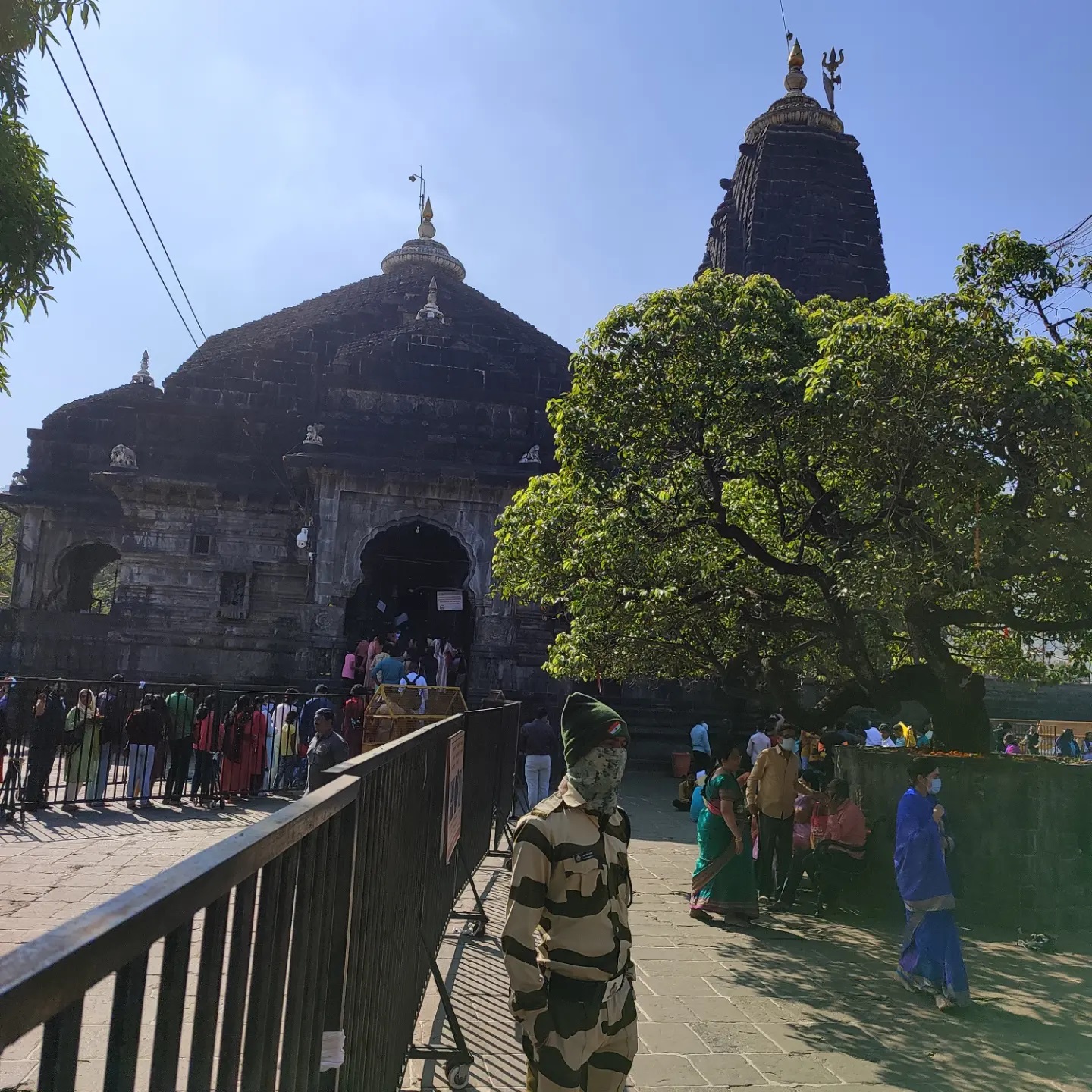
We set off in the morning from Nashik to Trimbakeshwar, eighth among the 12 jyotirlingas. Around 30 kilometers from Nashik, we sped along the highway and soon turned into Trimbak (the name of the village), when we were stopped by some people. They informed us that the car parking was here and we had to walk a little further for about 2-2.5 kilometers to reach the temple. They made us an offer, they could organise a parking for us closer to the temple and also help us with the darshan……. all for Rupees Two hundred. As we were not allowed to move forward, we negotiated the sum to Rupees One hundred fifty. One of the guys jumped into the seat besides the driver and now we were allowed to move further up without any problem. Seems to be a well-oiled racket of the locals with the blessings of the police & politicians, meant to target vehicles registered outside of Nashik.
Soon we reached the pilgrim town/village and our guide(if one may call him that), guided us into a narrow lane where he said we could park the car freely. We noticed other vehicles too parked there. Now we were on foot with our guide leading us through a narrow path adjoining a crematorium where the last rites of a departed soul were being performed. A few twists and turns with small shops on either side of the narrow alley and we were at the temple entrance. There was a long queue and we said we wanted to have the special darshan. Guide led us further and pointed to the opposite side where the special darshan counter was. We paid Rupees two hundred per head and then the guide took us to a different entrance, where again there were small vendors selling pooja materials and flowers. Took a small basket of flowers, dropped our shoes at the vendor’s counter, paid our guide and set foot into the temple. Our tickets were checked, and we joined the special darshan line that had to pass between a series of hair-pin railings and long benches for resting. Nothing ‘special’ about this line. It was moving in fits and starts, as darshans were being regulated between the common and special ones. Gave me time to mull over the history and legend of Trimbakeshwar.
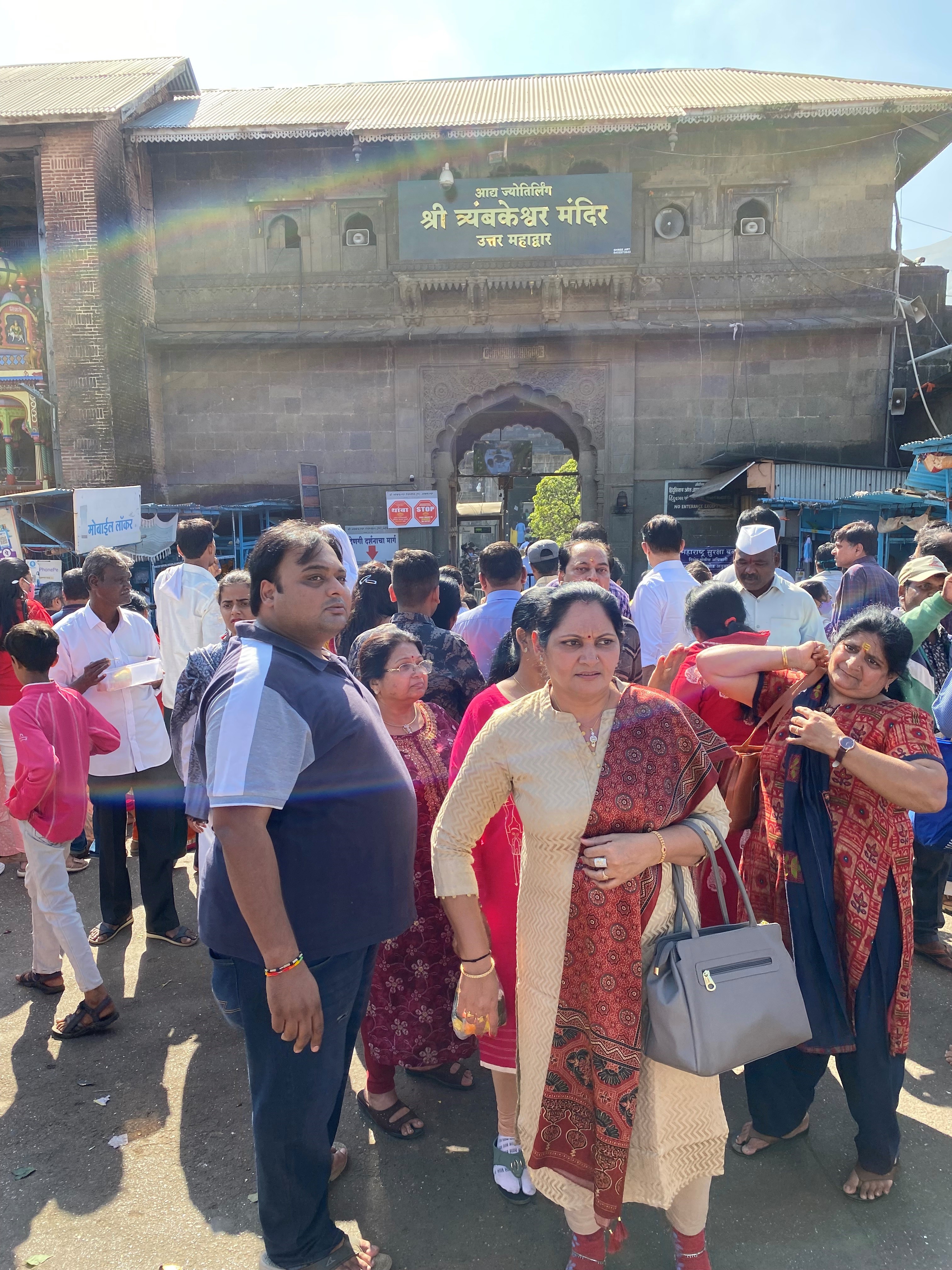
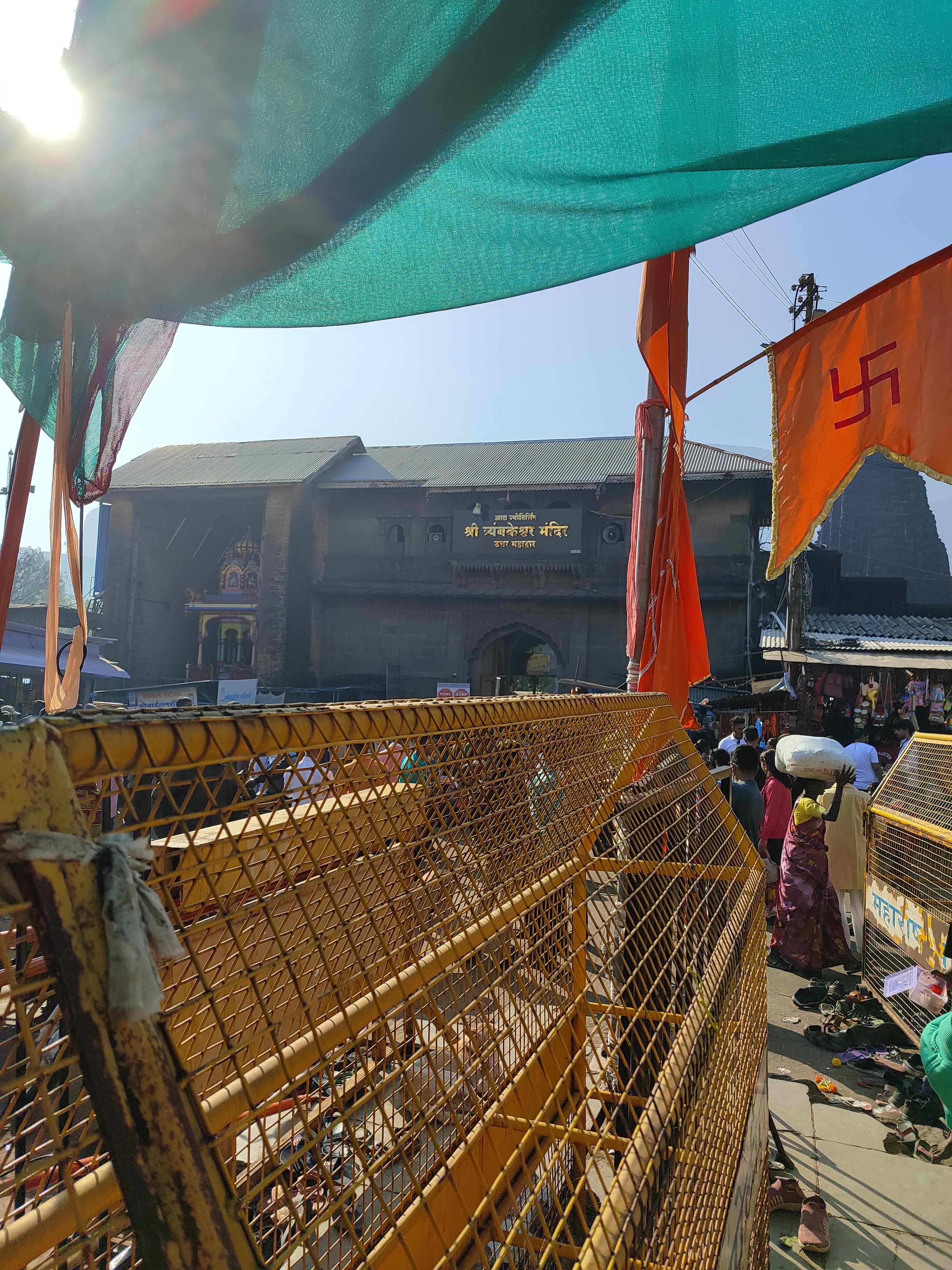
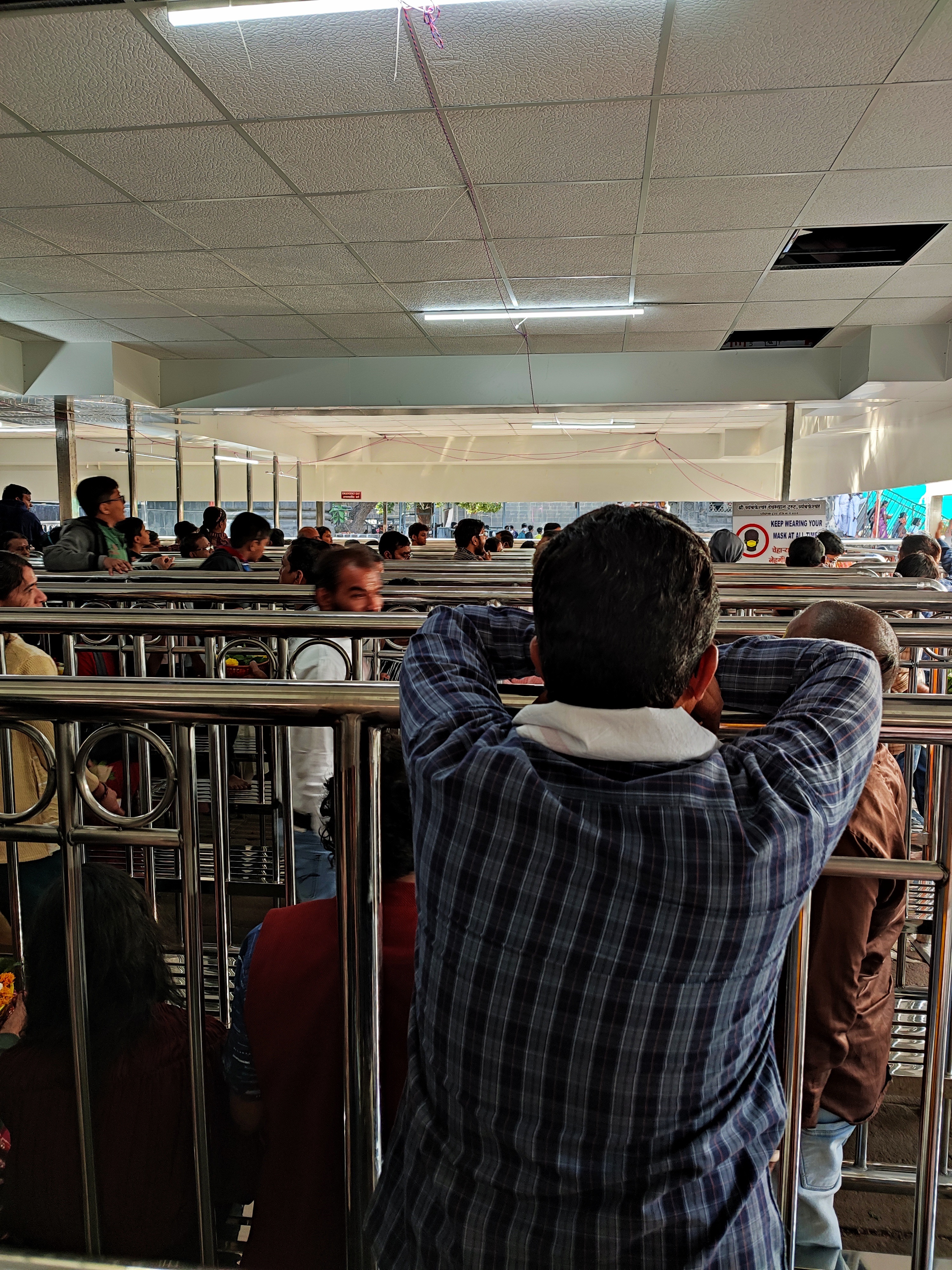
The Trimbakeshwar temple is situated between three hills — Brahmagiri, Kalagiri & Nilagiri. The temple in its present form was built in the 18th century by Peshwa Balaji Baji Rao, popularly known as Nana Saheb. The legend of Trimbakeshwar centers around Rishi Gautama, who had an ashram in the Brahmagiri hills. There was a 24-year famine all round, but the fields of the ashram were blessed with rains by Varuna, because of Rishi Gautama’s faith and devotion. It is said rice sown in the morning would be available for reaping in the afternoon. Due to this, Gautama was able to feed a large number of rishis at his ashram. One day, to chase away a cow from his field, Gautama threw a sharp Darbha at it and the cow died. As killing a cow was a big sin, the other rishis refused to eat at the ashram and asked Gautama to atone for his sin by taking a bath in the river Ganga; but Ganga was tied up in Shiva’s matted locks. Gautama did severe penance at the Brahmagiri peak, and a pleased Shiva agreed to release Ganga there from Brahmagiri. However, Ganga was not too pleased to part with Shiva and kept appearing and disappearing at different points, so that Gautama could not take a bath. Finally, Gautama using his powers surrounded Ganga, stopped her flow and made her stay here as Godavari. The still water or Kund came to be known as Kushavarta or Godavari kund, where devotees take a dip even today. Gautama requested to Shiva to make this place his abode. Shiva agreed and became Trimbakeshwar — the Lord of Trimbak. The uniqueness of this jyotirlinga is that the lingam has three faces (Tri) that of Shiva, Brahma & Vishnu — the only jyotirlinga where the trinity is worshipped.
The line was moving now. We had to cross the open courtyard to enter the main hall of the temple and people were taking out their mobile phones (yes, they are allowed here, but not near the lingam) and clicking pictures.
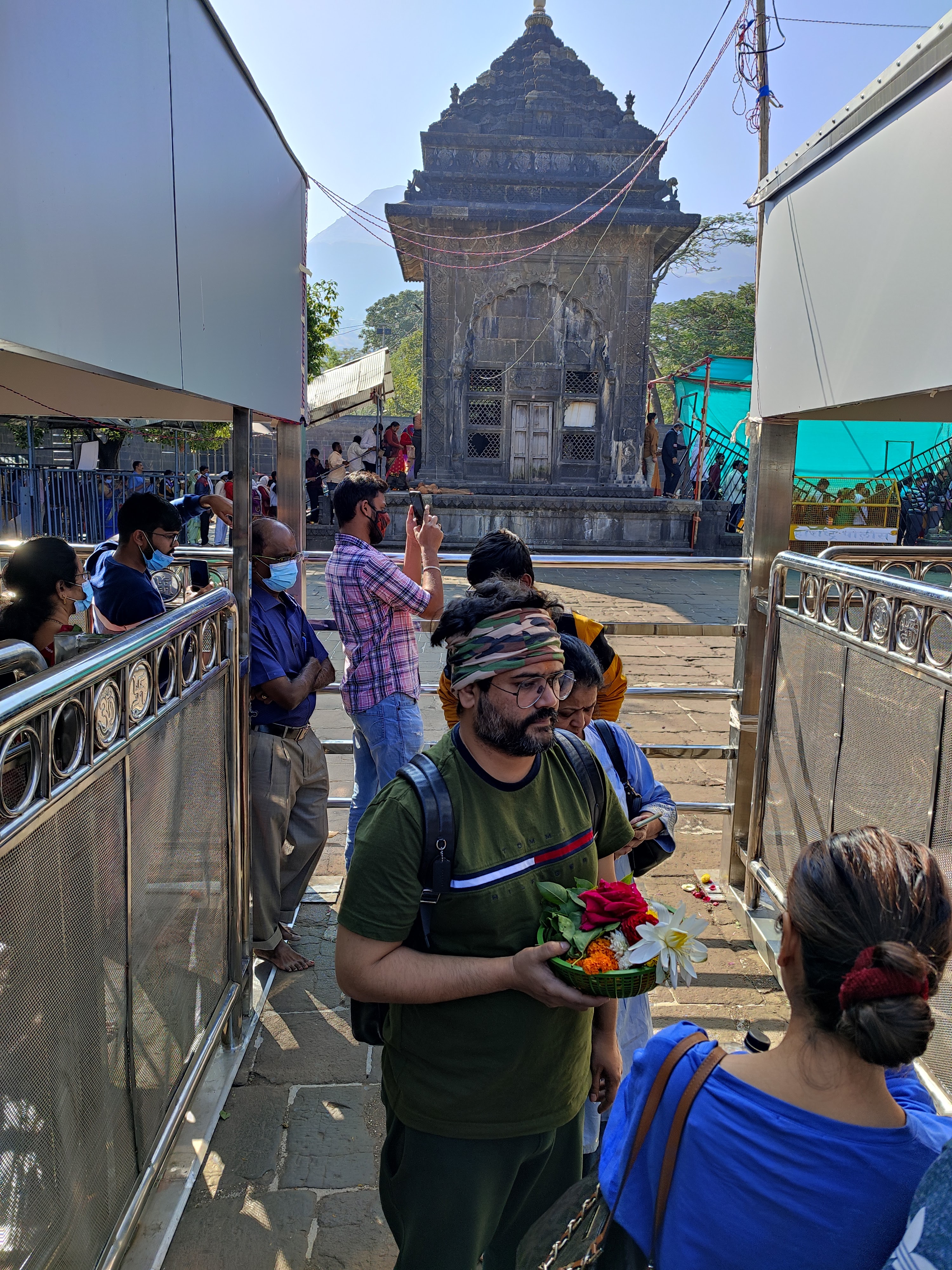
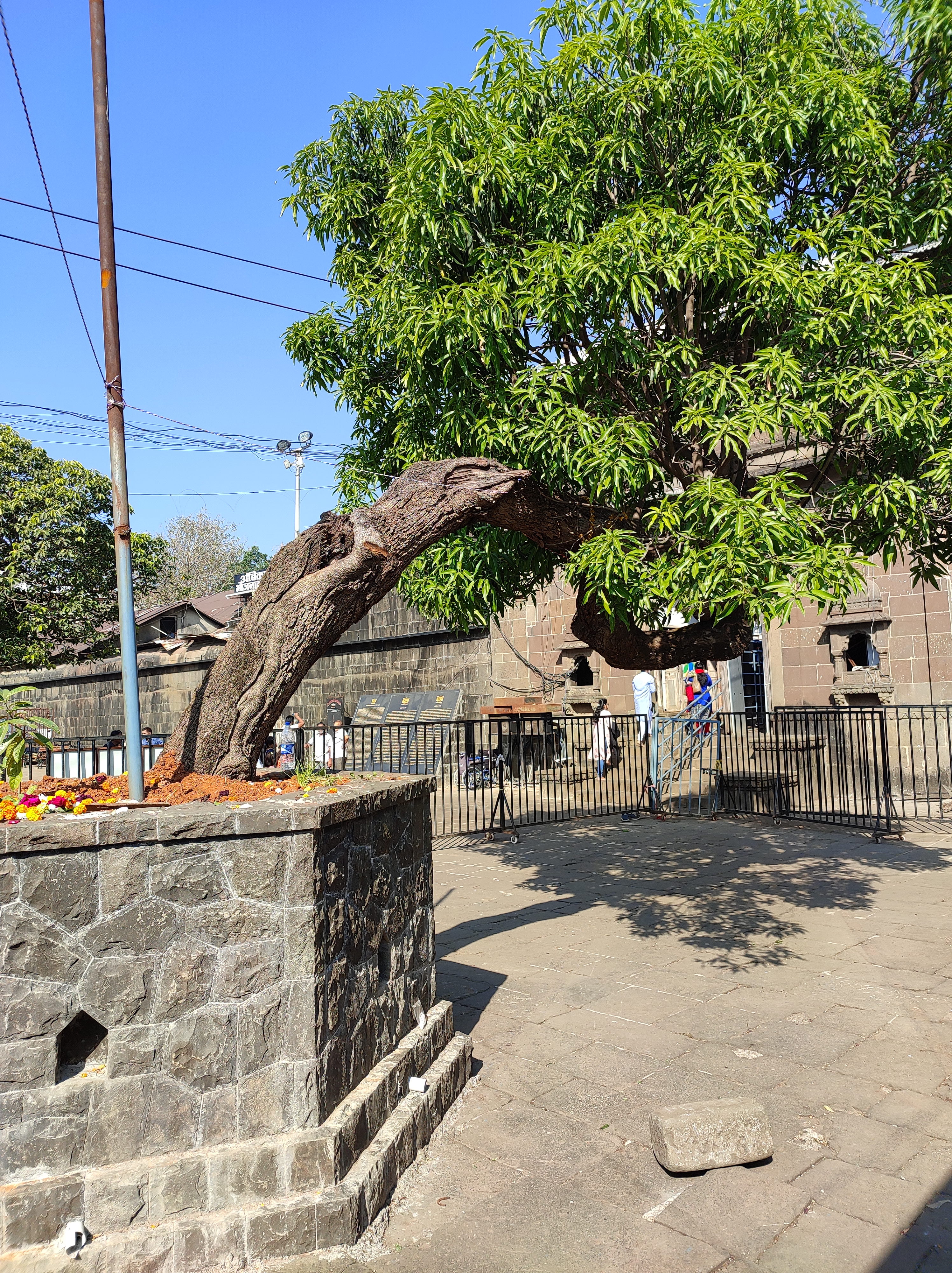
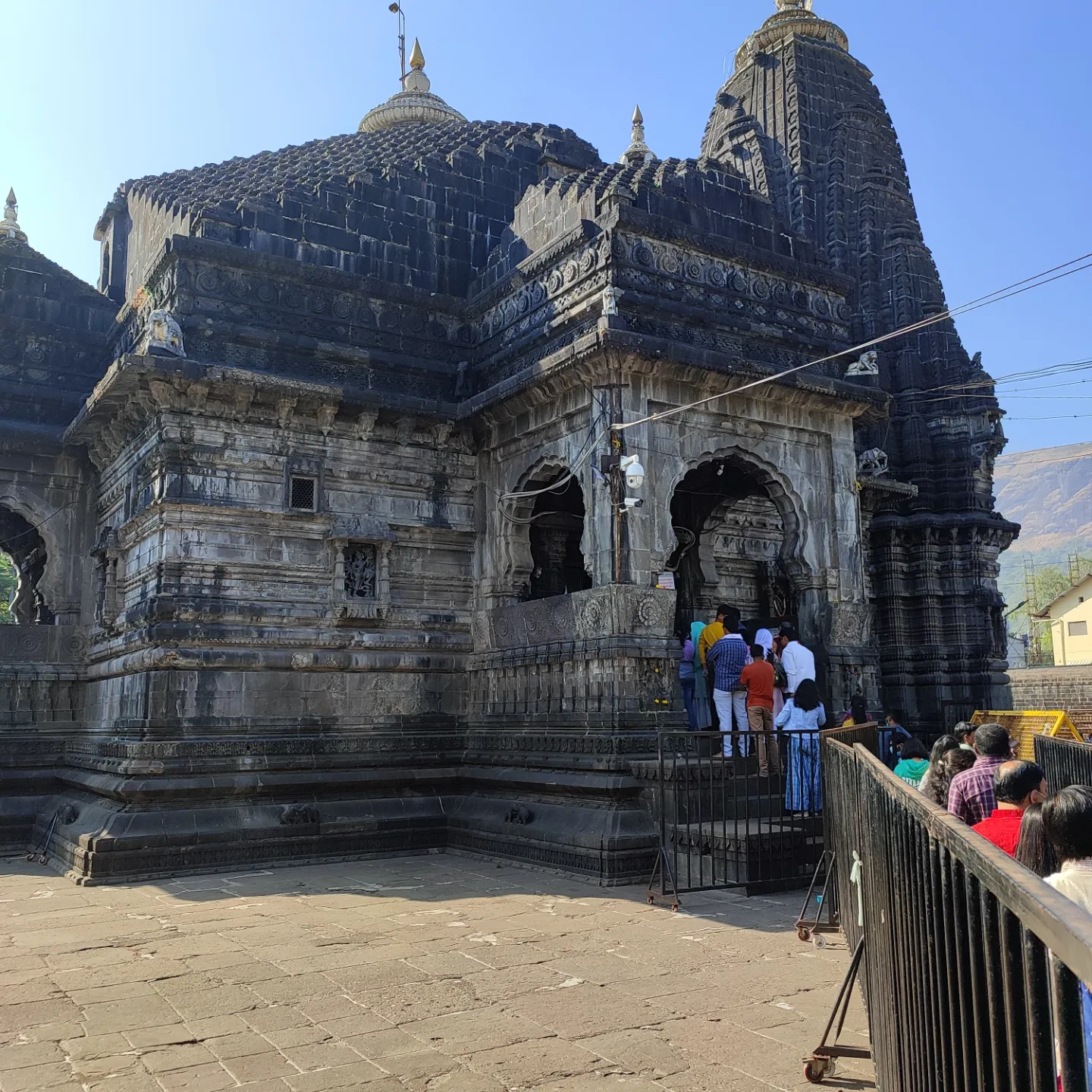
As we moved along, I was suddenly hit with a strange smell. A child in the queue had vomited and as she moved along, droplets of vomit were seen all along too. Adding to the discomfort was a large man in the queue who kept yawning so loudly, that everyone turned round again and again to glare at him —- he was oblivious to the surroundings. All was forgotten as we climbed the steps into the main temple hall. We are not allowed to go near or touch the jyotirlinga as in some other temples. Darshan is from a little away and the attendants point out to the low ceiling where there is a huge mirror in which the lingam could be clearly seen. Darshan done, we paid our respects to Nandi and stepped out of the main hall into the courtyard again. Photo sessions were on.
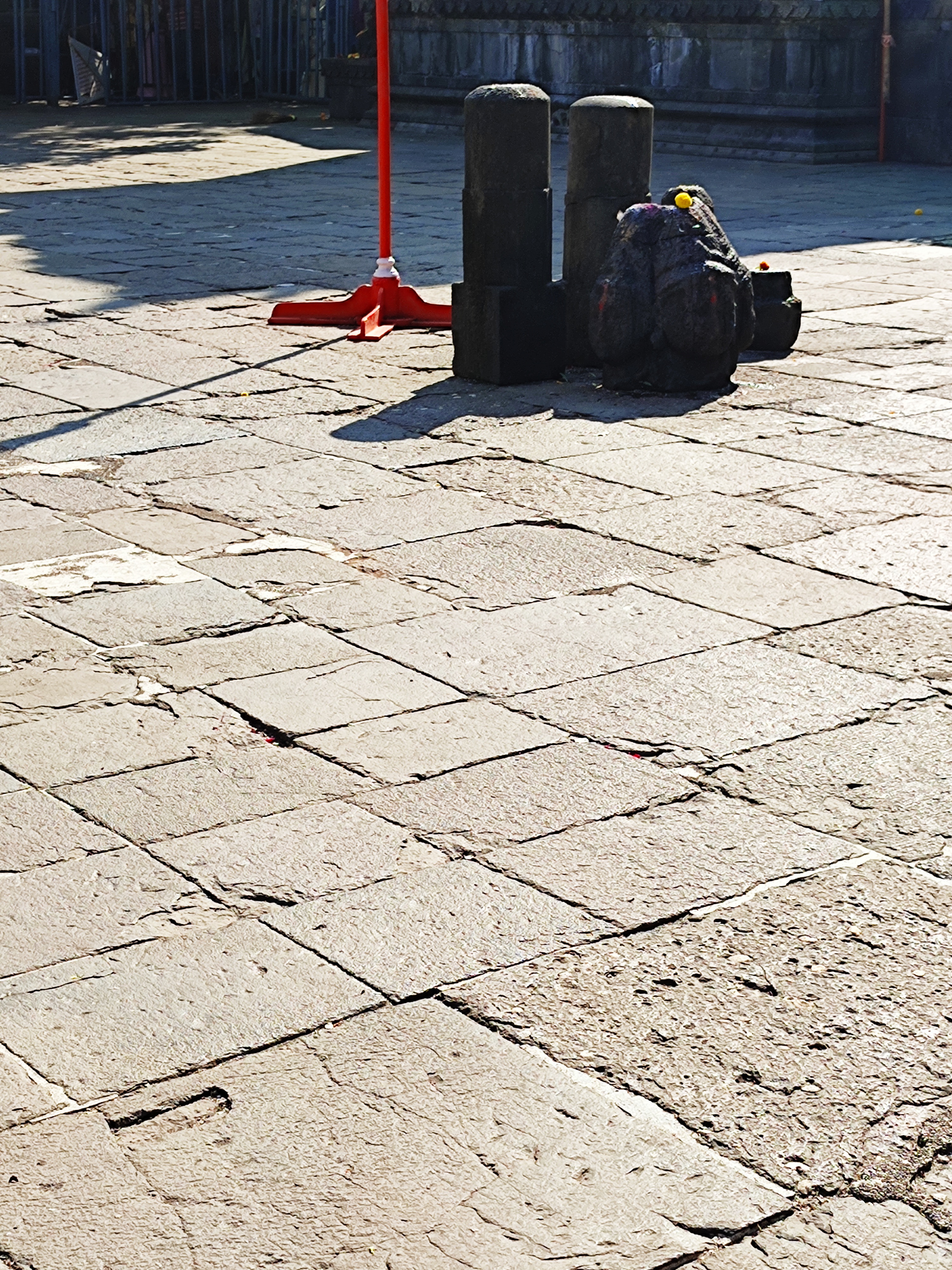
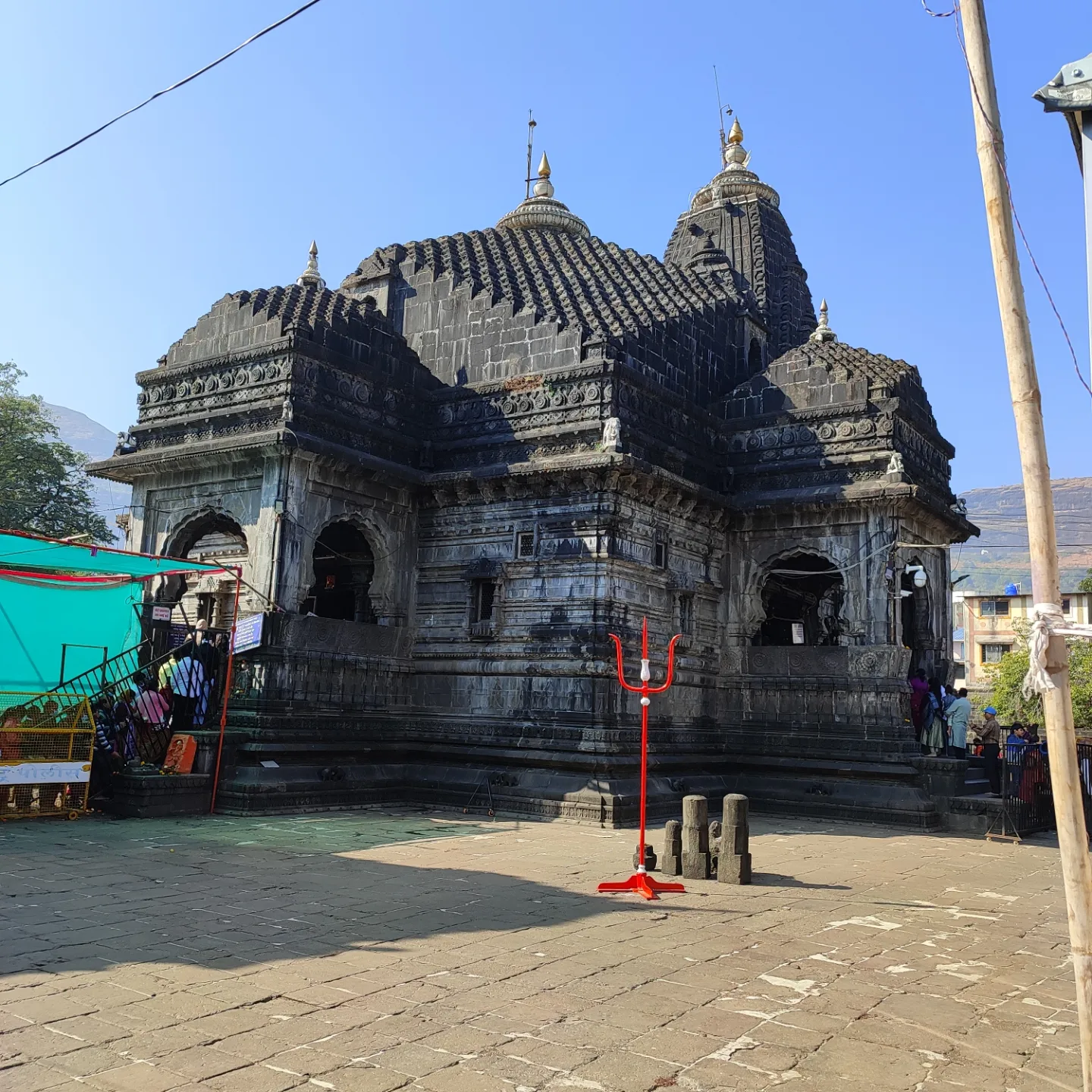
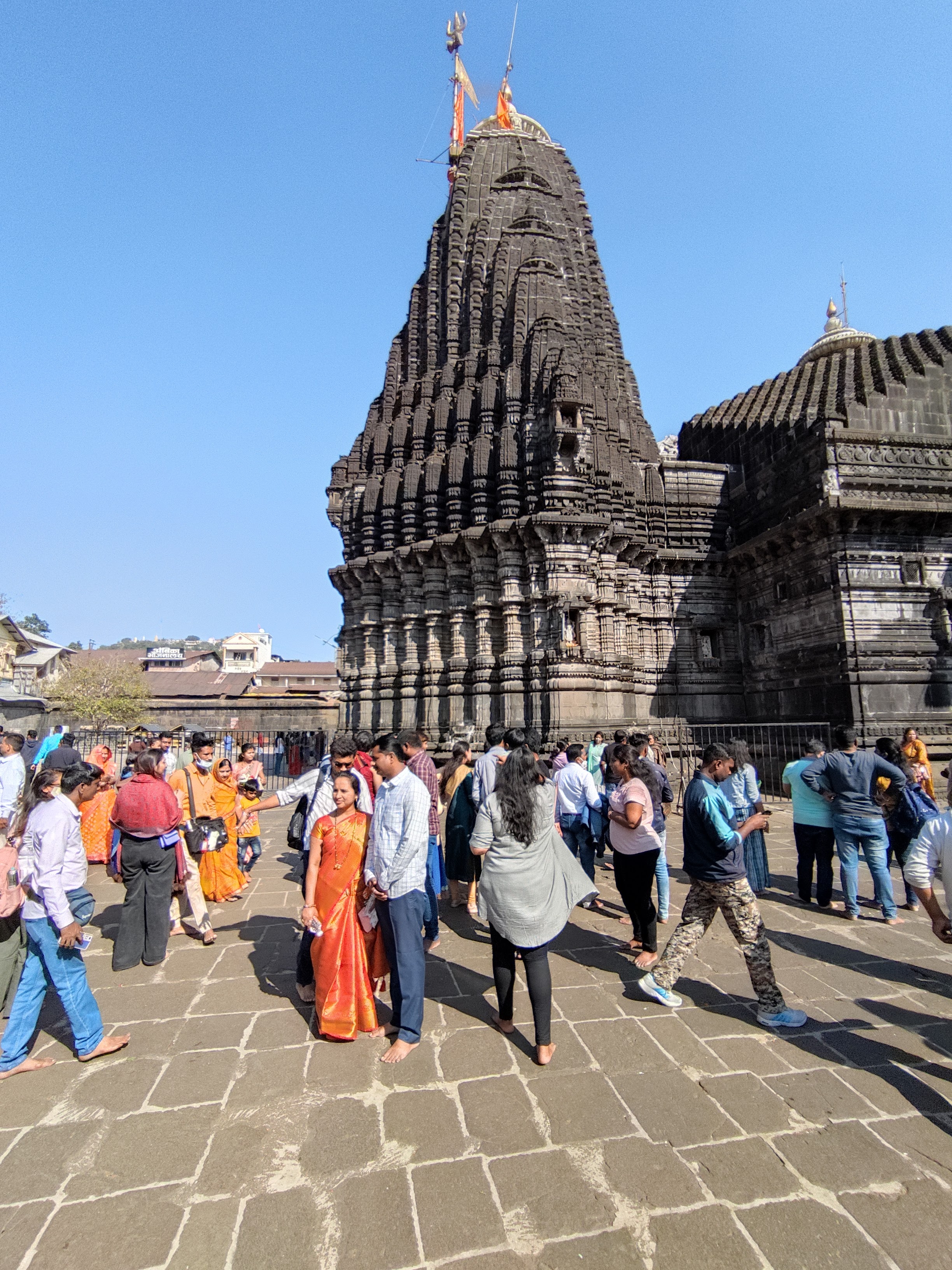
We completed the darshan in around 1 1/2 hours. Now the crowds were increasing and there was an announcement over the PA system that special darshan was temporarily suspended. Guess we were lucky. Stepped out into the street that resembled that of any pilgrim center. Old buildings, small shops, eateries, milling crowds, gurukuls and families dressed in white coming to pray for some departed dear ones. Walked across to the Ganga Godavari Temple near the Godavari kund. The kund was filled with people taking a dip. I did not venture into the water.
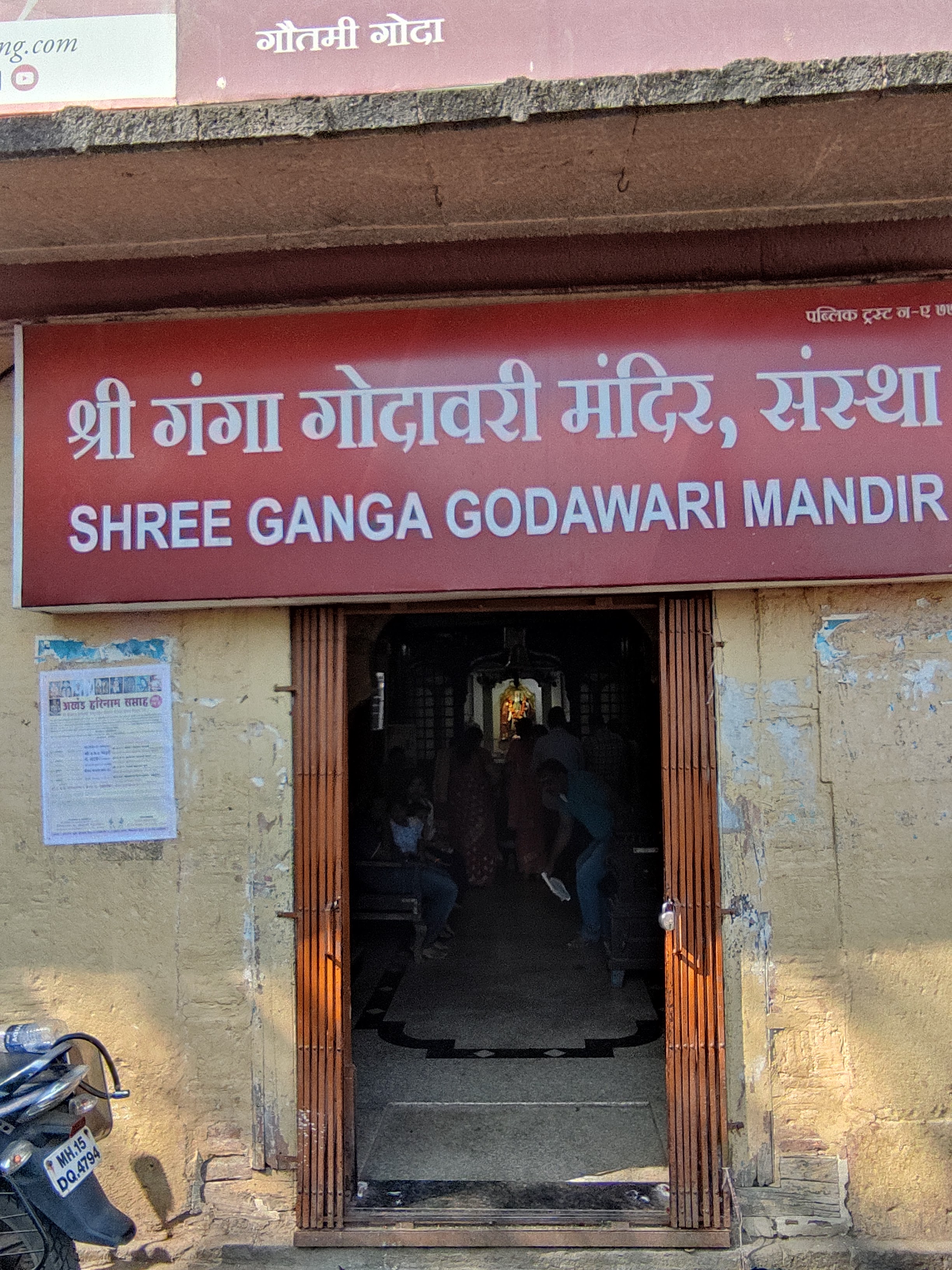
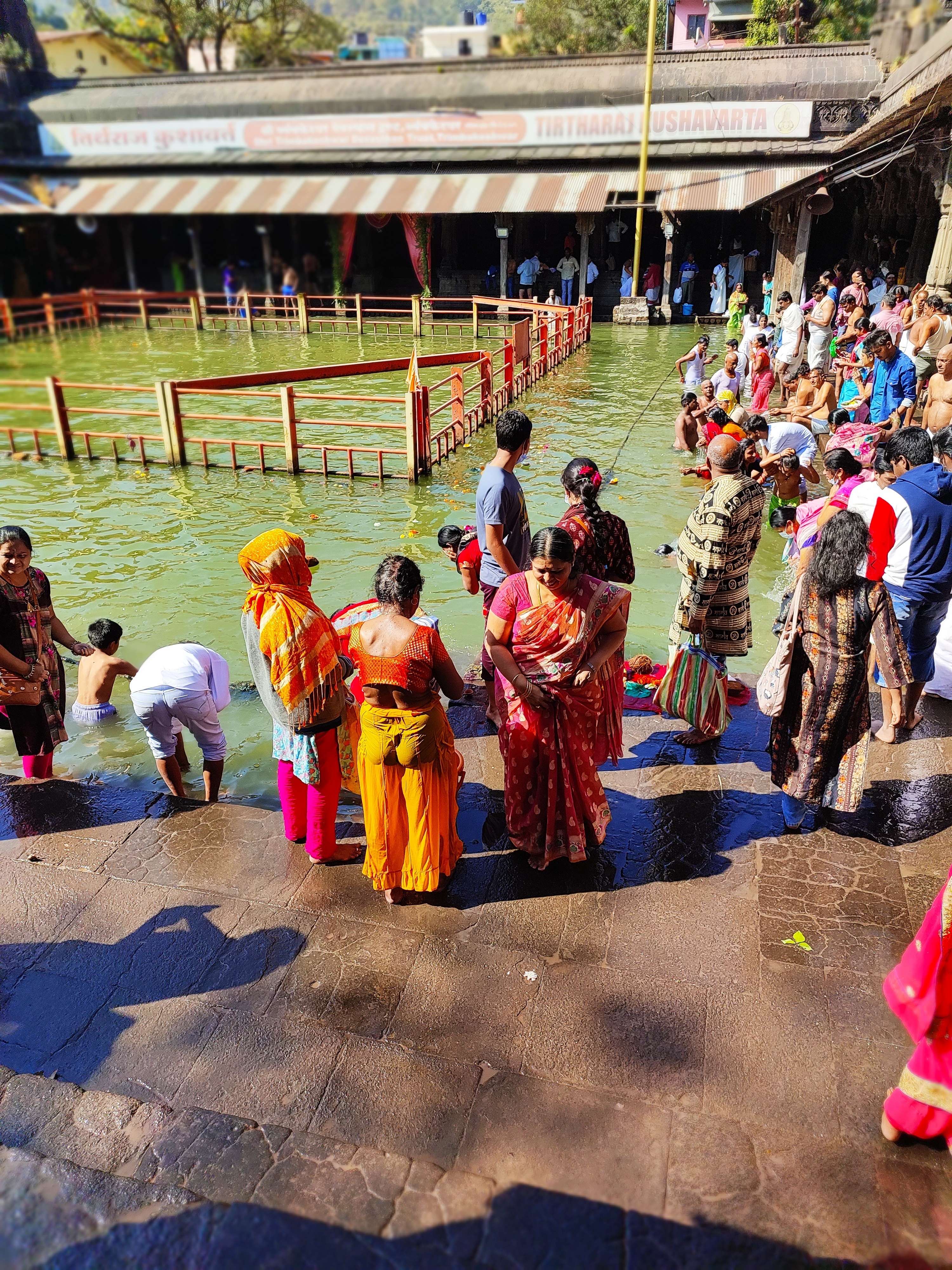
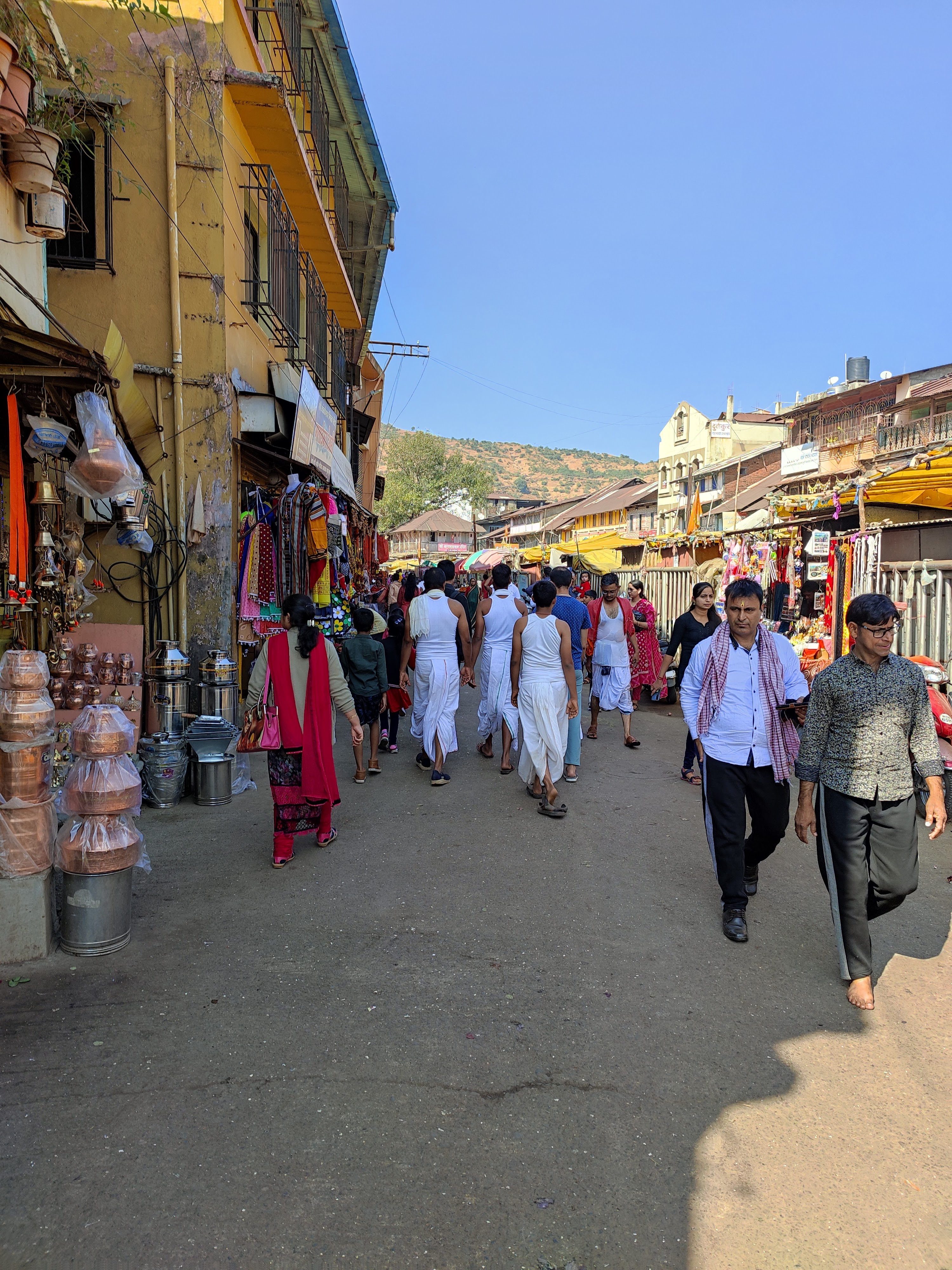
There was a long line of autorickshaws, some distance away from the Godavari kund. Chatted with the drivers and figured out that they would take you up the Brahmagiri hill and return, to view the spring from which the river Godavari starts its long winding journey to the sea. Cost of the trip — Rupees Six hundred. Duration — 3 1/2 hours to Gupt Godavari and back, including the time taken to trek uphill from the point where the autorickshaw would drop you off. Refused the offer and walked back towards the car. We were hungry and thirsty too, but the levels of hygiene in the small eateries dotting the town and the crowds were a bit of a put-off. Happy to have visited one of the larger and better-known jyotirlingas’ — a place where the Kumbh Mela is held once in 12 years. Jai Trimbakeshwar!
Discover more from BalasBroadcast
Subscribe to get the latest posts sent to your email.
loved the description. The parking racket is there everywhere. I encountered it in Shani Shignapur. Would not let the car proceed unless you take their services